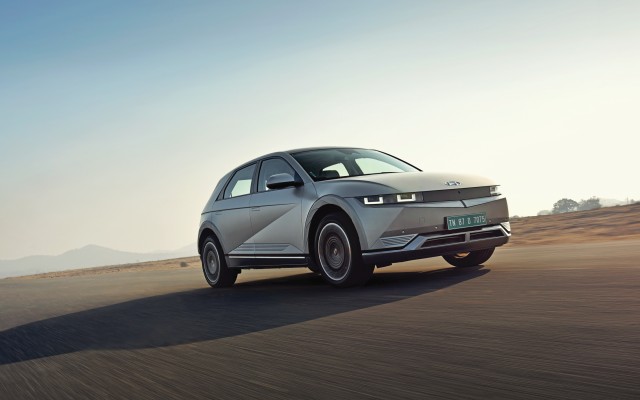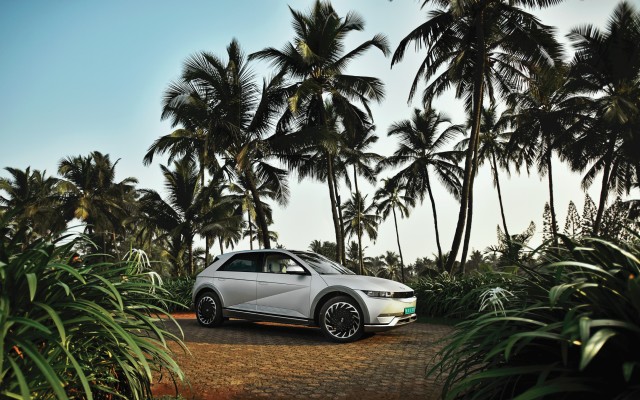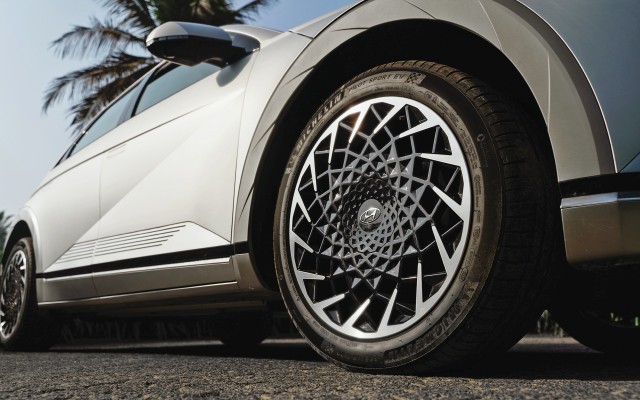The Hyundai IONIQ 5 is an all-electric SUV that raises the bar for comfort, refinement, and quality of experience. How does it feel on Indian roads, though? We drive around south Goa to find out exactly that.

Story: Jim Gorde
Photography: Hyundai India
Having a green thumb was, is, and always will be cool. Having a green car is the new perceived “cool”. However, as with everything, there are certain reservations. “Green” is a relative term. A truly green car with a zero carbon footprint simply does not exist. However, a significant reduction in the carbon footprint is possible and that is achieved by greener manufacturing processes and sourcing cleaner and more natural or recycled materials. Obtaining energy from renewable and sustainable sources is the greater step. And that is an area where the electric car stands its ground.
A recent study using data from the US of A’s fueleconomy.gov suggested that combustion-engine cars are wasteful in that they only use about 40 per cent of the energy from the fuel—at best—and the rest is wasted. Electric cars eliminate several moving parts and frictional middlemen—the red tape, so to speak—and maximize energy efficiency by doing at single-digit revolutions per minute (rpm) what combustion needs several thousand to accomplish. Of course, the counter argument is that mining for rare earth elements, cobalt, nickel, and iron, for example, which are required for the battery cells and the magnet make highly polluting mining procedures necessary to obtain them. Not to mention the human rights violations in Africa for obtaining these materials and, in other cases, the mining trucks with—give or take—90-litre, six-cylinder engines with thousands of horsepower needed to carry those very materials from the base of the mine to the surface. Either way, sustaining “human development and expansion” overall seems like the most unsustainable thing. So far as the debate between which is cleaner is concerned, we have to wait and watch. For now, I shall evaluate the Hyundai IONIQ 5 for what it is—a car.

The IONIQ 5 is a unique flagship for Hyundai to have in India. It steps into territory once occupied by the Terracan and Santa Fe but brings an electric motor mounted on the rear axle and no clatter or any engine sound whatsoever. It also brings in materials made from sugarcane, corn, flowers, and paperette, to name a few. And it also brings some truly unique styling.
I’ve had the N Vision 74 as my desktop wallpaper ever since I first laid eyes on it. Itself a modern rendering of the 1974 Hyundai Pony Coupé, the design won me over instantly, “parametric pixels” and all. The sight of a pixelated design on a modern car that looks like it came from a 1980s video game is something not everyone may relate to, but, in every sense, it stands out. The square element LED headlights and tail-lights are like nothing else on sale. The car is huge, but its design and proportions are deceptively like those of a hatchback. The wheelbase is 3,000 millimetres long. That’s more than many premium luxury seven-seat SUVs; it equals that of the BMW iX. The stance is uniquely soothing and innately aggressive at the same time, like watching a lion on safari until eyes meet. The side profile has distinct lines and the 20-inch wheels with 255/45 rubber and the rear wrap up the design in style, with twin rectangles on either side, with a piercing pair of white reverse LED “pixels” in between.





















Leave a Reply